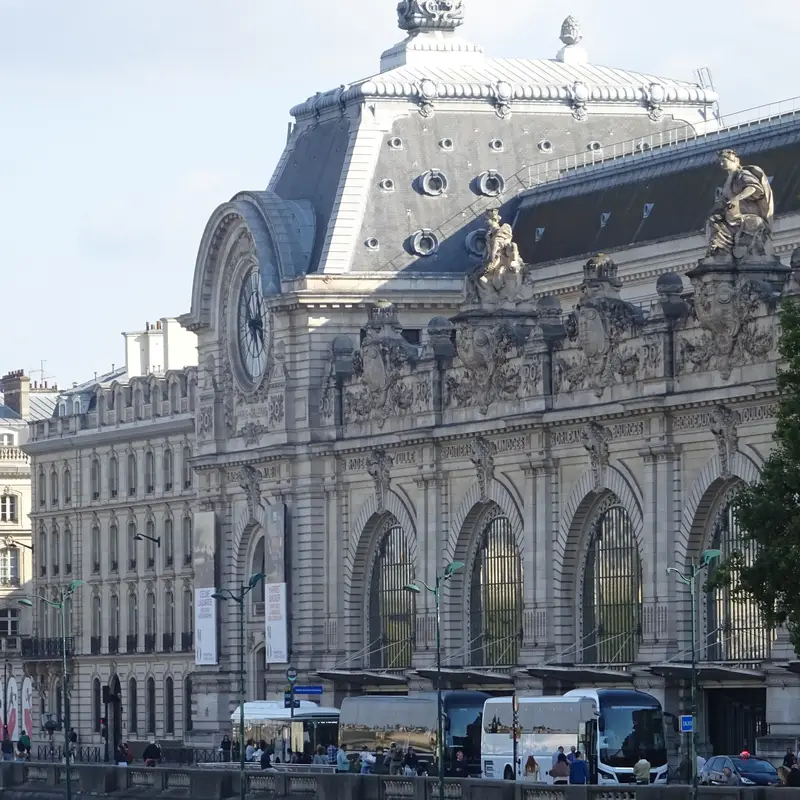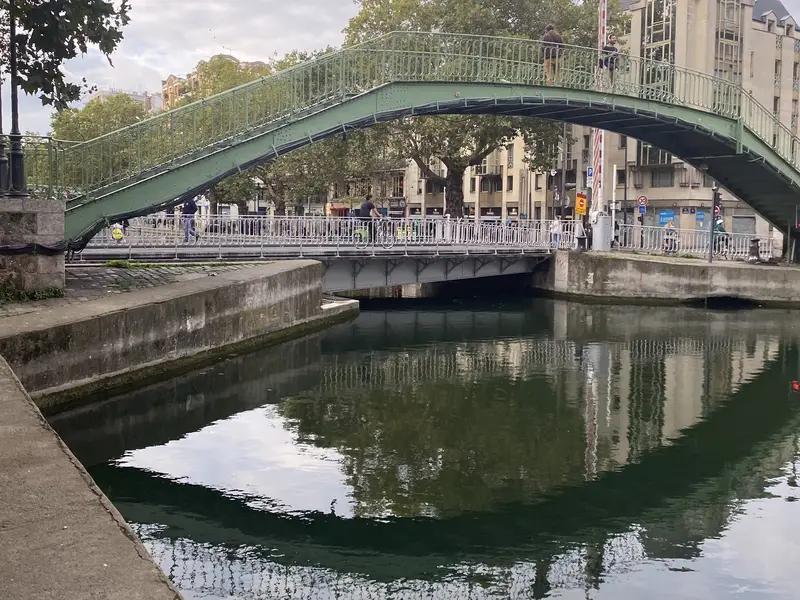From Train Station to Artistic Treasure: The Musée d’Orsay
A Parisian gem on the banks of the Seine, the Musée d’Orsay combines art, history, and architecture in a unique symphony.
Musée d’Orsay
The Musée d’Orsay (Orsay Museum) is one of the most significant cultural destinations in Paris. Located on the left bank of the Seine, this iconic space attracts visitors not only with its treasures of Impressionism but also with its architecture, which tells a story of transformation over time. Whether you’re an art lover, a history enthusiast, or simply looking for inspiration, the Musée d’Orsay will not disappoint.
From Train Station to Museum: A History of Transformation
The former Gare d’Orsay train station was built in 1900 for the World’s Fair. With its Art Nouveau style and innovative technologies, such as steel structures and massive glass windows, it was an architectural marvel of its time. After losing its original function, however, the building fell into disrepair. It wasn’t until 1986 that the station was transformed into a museum, which now houses works from 1848 to 1914.
Today, the Musée d’Orsay is not only a museum but also a testament to architectural renewal, breathing new life into old structures.
Collections That Amaze Everyone
The Musée d’Orsay is globally renowned for its collection of Impressionist and Post-Impressionist works. Its walls are adorned with masterpieces by artists such as Claude Monet, Edgar Degas, Pierre-Auguste Renoir, and Vincent van Gogh. Among the most famous pieces are Monet’s “Water Lilies”, Degas’ “Ballet Dancers”, and van Gogh’s “Starry Night Over the Rhône”.
In addition to paintings, the museum boasts an extensive collection of sculptures, photographs, decorative arts, and architectural designs. A particularly fascinating section focuses on artistic developments during the Industrial Revolution, illustrating the connection between art and modernity.
A Landmark With a View: The Breathtaking Clock
One of the most photographed features of the museum is its giant clock, a relic from its days as a train station. The clock offers a unique view of Paris through its face, providing a stunning perspective of the Seine and iconic landmarks such as Montmartre. It’s a must-see spot for visitors seeking an unforgettable photo opportunity.
Tips for Visitors
Planning a visit to the Musée d’Orsay? Here are some helpful tips to enhance your experience:
- Book Tickets in Advance: Avoid long queues by purchasing your tickets ahead of time.
- Best Time to Visit: Visit early in the morning or later in the afternoon when the museum is less crowded.
- Guided Tours: To gain deeper insights into the artworks, consider investing in a guided tour.
- Discover the Café on the Top Floor: Enjoy excellent coffee and a breathtaking view of Paris.
How to Get to the Musée d’Orsay?
Getting to the Musée d’Orsay is easy thanks to its central location on the left bank of the Seine. The nearest metro station is Solférino on Line 12, just a few minutes’ walk away. For those who prefer suburban trains, take RER Line C and get off at the Musée d’Orsay station, located directly at the museum’s entrance. For a more romantic approach, consider a walk along the Seine to set the perfect mood before your visit.
An Experience That Stays With You
The Musée d’Orsay is more than just a place full of paintings—it’s an experience that transports you to another world. From its breathtaking architecture to its deeply moving artworks, Orsay is a true gem of Paris. Whether you’re an art connoisseur or simply looking for a peaceful retreat, a visit to this museum will be among your unforgettable moments in the City of Light.









